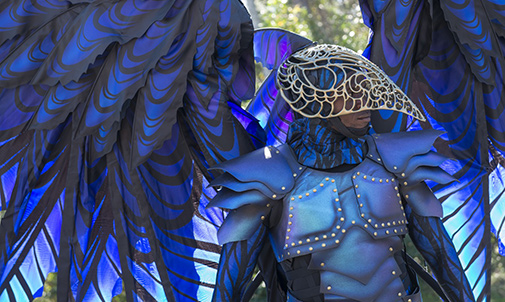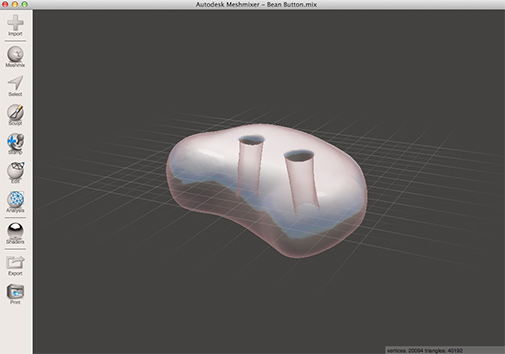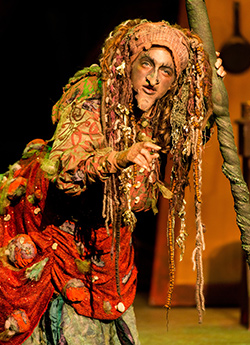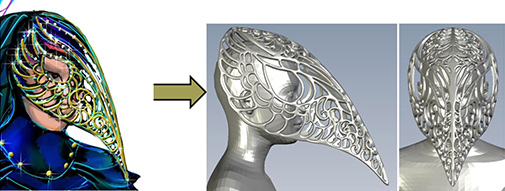Conference & Stage Expo
To Explore 3D Printing for Costuming

Photos/Courtesy Joe Kucharski
Want a quick and easy way to create costume pieces? Investigate the possibilities with the 3D Printing for Costumes and Technology panel at the Cincinnati 2015 Annual Conference & Stage Expo.
Heather Milam (Indiana University), Joe Kucharski (Baylor University), and Lisa Hanusiak (Walt Disney Parks & Resorts) will discuss the ins and outs of using this technology for costumes from 5:30 to 6:45 p.m. Thursday, March 19 in Duke Ballroom D.
3D printing has become increasingly accessible to designers in the last 10 years and has changed the way designers can problem solve and execute designs for theatre, film, and themed entertainment.


The panelists will walk attendees through the history and three basic types of additive prototyping and manufacturing technology that costume designers and technicians can most benefit from. This will include basic software, various printing materials, and finishing techniques that can be used at universities and regional theatres.
Mr. Kucharski will discuss his process of designing, digitally modeling, and 3D printing notions and small décor pieces for recent productions at Baylor University Theatre.
Ms. Hanusiak, materials and process engineer, whose collaboration with costume designer Mirena Rada on the Walt Disney World Resort’s Festival of Fantasy Parade was featured on the professional costume design blog, TyrannyOfStyle.com, will talk about recent developments in 3D printing costume pieces, including case studies in additive prototyping as well as manufacturing. The panel will also feature a display of some of the large-scale, groundbreaking, 3D printed costume pieces from the Festival of Fantasy parade.
Initially developed over 30 years ago by engineers as a means of rapid prototyping, as the printers have advanced and become more user friendly, theatre practitioners have begun to adopt them as both a means of rapid prototyping, and rapid manufacturing, creating finished production pieces. The technology is being used in both educational theatre productions and large-scale theme park spectacles.

Digital Sculpting - The head piece was digitally sculpted using 3D sculpting software beginning with the Costume Designer's rendering to achieve a first draft. The digital design was then finalized in an interactive sculpting session between the Costume Designer and the Digital Sculptor.

